I’ve written a few blurbs about SETX during World War II, and I plan on writing a few more in the future. This era of our country and the generation to which we owe much inspires me greatly. Since childhood, I have absorbed the history told in theaters, books, and legends, but a walk through a cemetery certainly adds a human factor to the endless tales of sacrifice. Especially when the headstone in front of you is not a headstone at all, but a memorial to a fallen son or daughter who has been lost forever. As time passes and there is no one left to speak or remember their name, the life that was lived is forgotten. There are a few of these stories here in SETX, and I hope to honor these individuals in future blogs by sharing their stories. But before I delve into some of our SETX locals, I would like to bring attention to a few lost heroes who deserve to be remembered in SETX history.
It was fall 1944, and the war was still raging on both fronts. Like most periodicals across our nation, local SETX newspapers centered on the liberation of Belgium and the European theatre. The heavy fighting on Peleliu and throughout the Pacific were occasionally mentioned, but these events seemed to take a back seat to the success in Europe. It would be at this theatre that Marine Aircraft Group 93 (MAG-93) would train its pilots for battle. MAG-93 began in April 1944 at Cherry Point, North Carolina. Its first squadron was commissioned on April 15th under the command of Major John L. Dexter and was known as Marine Scout Bomber Squadron 931. Other squadrons, such as VMSB-932, would also be commissioned into MAG-93 and would spend countless hours (round the clock, for a brief time) in training centered at Jefferson County Airport. However, the Marine Scout Bombing Squadron (VMSB-931) will be our main focus in this article.
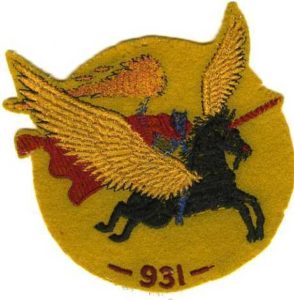 In May, VMSB-931 was transferred to Eagle Mountain Lake, Texas (near Ft. Worth) to begin their operational training. It also became attached to Marine Aircraft Group 33 (MAG-33). The squadron consisted of 18 SBD-5 (Dauntless)-type aircraft with 37 commissioned officers and 160 enlisted men. Records show that only one operational accident occurred during this period, which resulted in the damage and loss of an SBD-5. Fortunately, there was no loss of life, and the squadron continued their training through July, attaining a 43.1% readiness for combat rating by their superior.
In May, VMSB-931 was transferred to Eagle Mountain Lake, Texas (near Ft. Worth) to begin their operational training. It also became attached to Marine Aircraft Group 33 (MAG-33). The squadron consisted of 18 SBD-5 (Dauntless)-type aircraft with 37 commissioned officers and 160 enlisted men. Records show that only one operational accident occurred during this period, which resulted in the damage and loss of an SBD-5. Fortunately, there was no loss of life, and the squadron continued their training through July, attaining a 43.1% readiness for combat rating by their superior.
By August, it was time for the squadron to begin the second phase of their training; thus, the VMSB-931 were temporarily detached to the U.S. Naval Section Base in Sabine Pass, Texas “for duty in connection with the basing of tactical squadrons of Marine Aircraft Group 33 at Jefferson County Airport, Beaumont, Texas. This duty includes gunnery, dive-bombing, and overwater navigation training,” wrote Commander John L. Dexter in the squadron’s war diary on the first of August. The next week would consist of setting up operations at their new location and finally beginning their overwater flight training on August 8th.
As most of us know, the Gulf can be very unpredictable in September, and 1944 was no exception. On September 9th, a tropical storm formed about 170 miles southeast of Matamoros, Mexico, and began to move north. All planes were evacuated out of the area to where I would assume was back to Eagle Mountain Lake. Their absence would not last long, however, because Tropical Storm Six would move northeast and make landfall at the Mississippi River Delta on the 10th with top winds of 65 mph. Needless to say, all planes were back on September 11th. Training resumed the next day, and here is where our story takes a deadly turn.
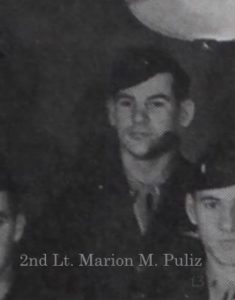 During overwater flight training off the coast of the Sabine Pass, 2nd Lieutenant Marion M. Puliz attempted to rendezvous from below the lead plane flown by 2nd Lieutenant Richard L. Savoie, resulting in a mid-air collision. Both planes crashed into the Gulf and sank in 35 feet of water. Both pilots and the two gunners, Corporal Richard R. Stoddard and Private First Class William C. Bathurst, were killed. 2nd Lieutenant Puliz’s body was the only one recovered out of the four.
During overwater flight training off the coast of the Sabine Pass, 2nd Lieutenant Marion M. Puliz attempted to rendezvous from below the lead plane flown by 2nd Lieutenant Richard L. Savoie, resulting in a mid-air collision. Both planes crashed into the Gulf and sank in 35 feet of water. Both pilots and the two gunners, Corporal Richard R. Stoddard and Private First Class William C. Bathurst, were killed. 2nd Lieutenant Puliz’s body was the only one recovered out of the four.
More tragedy hit 931 eight days later when 2nd Lieutenant William G. Duvall “attempted a slow roll at low altitude. He lost control and went into a progressive stall, hitting the water on the left wing. Plane was observed to explode and sink immediately upon striking the water,” wrote Commander Dexter. Both the pilot and the gunner, Private First Class Albert W. Bitner, perished in the crash, and neither body was recovered.
Amazingly, there are a few newspaper accounts of these tragedies; however, with few of them offer details of the actual crashes. For instance, the Port Arthur News reports consisted of the identities of the victims and, oddly enough, a few mentions of sightings of a body a few weeks later off the coast of High Island. A search for the bodies after each accident occurred was conducted by the Coast Guard, but no remains were found.
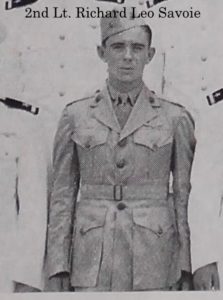 An article dated September 27 reported that a swimmer informed the Coast Guard that he had brushed against a body while swimming just off the coast of High Island. A search ensued that lasted until 2 a.m. but was deemed “fruitless” by Coast Guard officials who, in their statement, said that the swimmer “had been mistaken.”
An article dated September 27 reported that a swimmer informed the Coast Guard that he had brushed against a body while swimming just off the coast of High Island. A search ensued that lasted until 2 a.m. but was deemed “fruitless” by Coast Guard officials who, in their statement, said that the swimmer “had been mistaken.”
The following day, the Port Arthur News reported, “Louis Welch of Sabine Pass, county commissioner of Precinct 3, also reported seeing the body to Coast Guard officials. According to Welch, he sighted the body floating in the Gulf water about one mile east of the Chambers and Jefferson Counties boundary line.” Welch tried to “tow it ashore,” but a wave swept the body away. The search for the body was resumed, but it was never recovered.
Operational training ended September 21st for the VMSB-931, and the squadron returned to Eagle Mountain Lake a few days later. But this was not the end of the Marine Aircraft Group’s training facilities here in Jefferson County, as the 932 (VMSB-932) would arrive at Jefferson County Airport on September 26th to begin their operational training as well. I am unsure where these brave young men ended up after their training, but I can only guess that a few would have participated in ending this long, drawn-out war. I researched further, but there are thousands upon thousands of war diary documents to sift through and many more rabbit holes that I find myself not capable of going down in a relatively short amount of time. One day, if time permits, I would like to continue on the trail of the 931, but plenty more tales are coming soon.
Sources:
Jefferson County Historical Commission archives
Fold 3
Port Arthur News archives

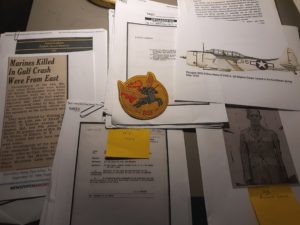
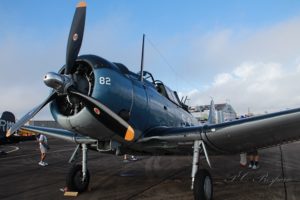
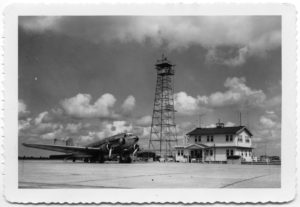
You must be logged in to post a comment.